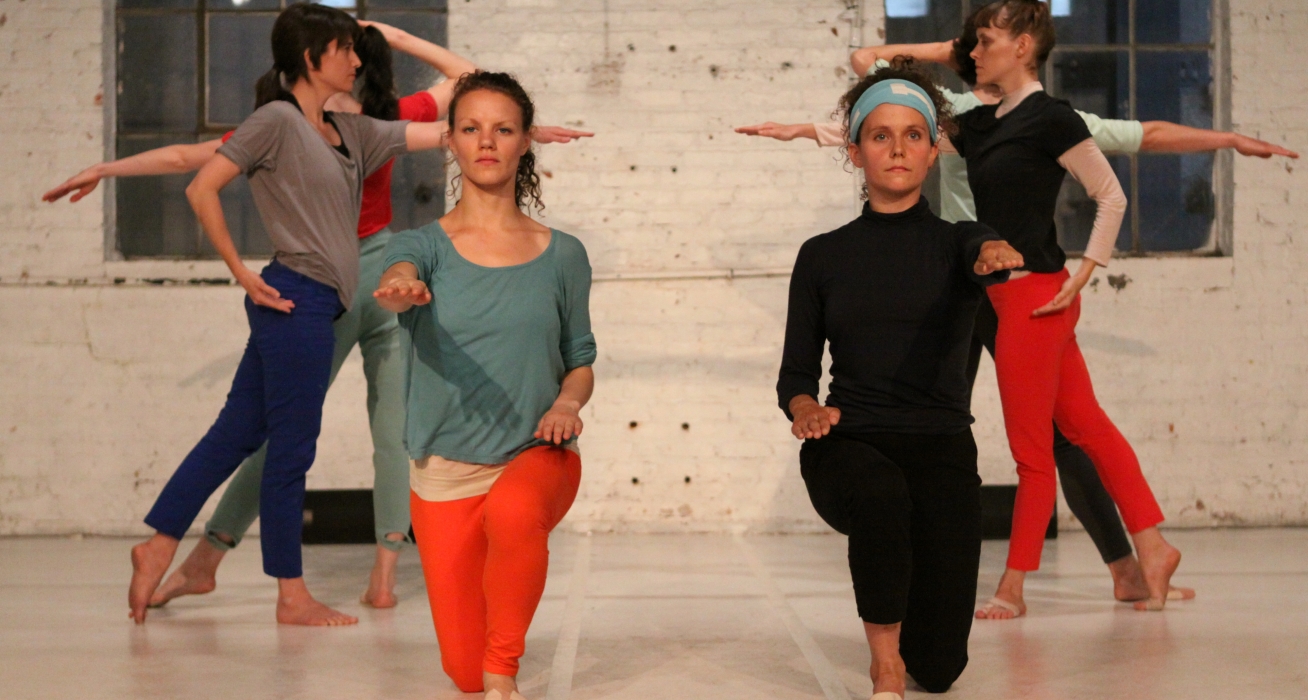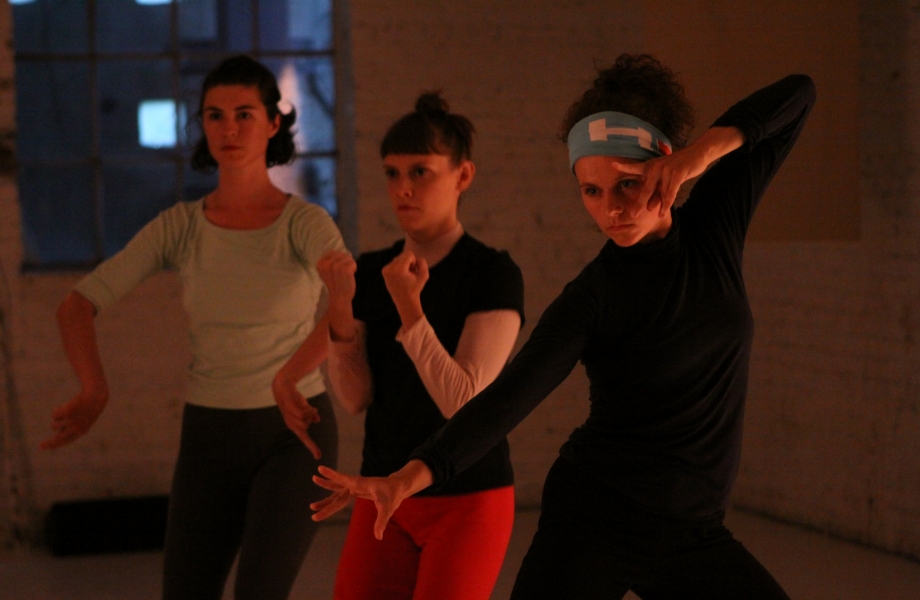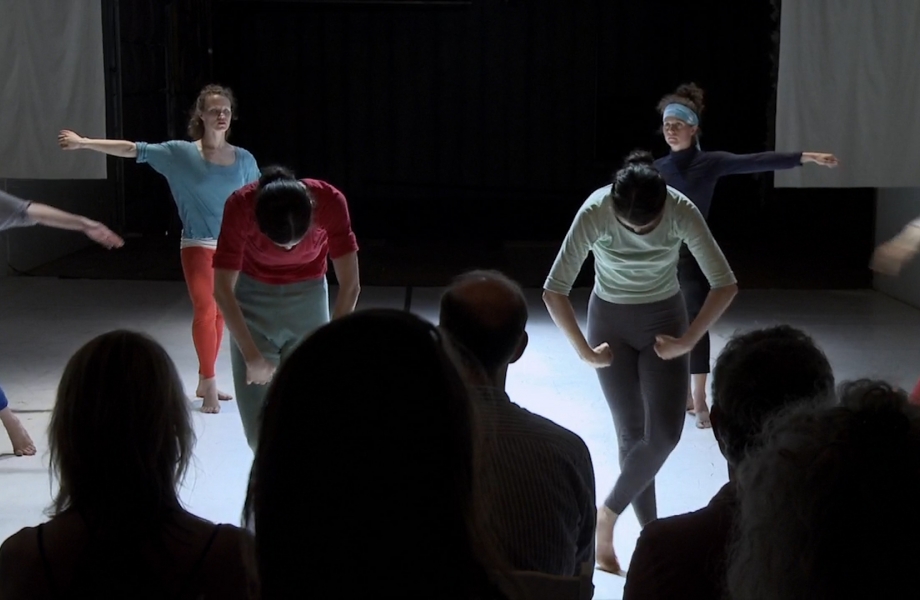Departures and Through Lines

There is something distinctly female about the quiet, controlled worlds that Beth Gill creates. They conjure the still interiors of an Anita Brookner novel, or the sensual gradations in an Agnes Martin painting. Disruptions are subsonic.
I wrote these words a decade ago, in 2007, reviewing Beth Gill’s Eleanor & Eleanor at Dance Theater Workshop (now New York Live Arts), for The New York Times. It was, I think, my first time seeing her work.
I knew very little about her, going in, other than that she was a young choreographer people were beginning to talk about. I was then a young critic, still trying to get a sense of how to look at and write about contemporary dance; perhaps that’s why I used two artists working in other forms to contextualize her. (Watching it now my mind moves also to Trisha Brown, and Merce Cunningham; Gill’s work was, and remains, very much in conversation with a white, New York experimental tradition.) Or maybe it was dumb luck: while Brookner was a passing reference, now I never think about Martin without thinking about Gill—they are married, happily, in my art-watching and -thinking mind. Those delicate yet severe striations: space and time as played out over minute distinctions and filtered through sensitive intelligences. Control of form so as to access what cannot be controlled. Structure as a way to enfold and withstand emotion.

There Martin’s ghost was again, when I traveled to the 2017 Fusebox Festival in Austin, Texas, to see Gill’s newest dance, Catacomb. Gill’s work now feels intimately familiar to me, both in terms of her fidelity to collaborators (the strength of her relationship with lighting designer Thomas Dunn and composer Jon Moniaci is clear throughout), and the constancy of her voice: the way she wields architectural geometry, creating spaces within spaces; how she drives deliberateness of movement to slide into abstraction, conjuring intimacy and distance at once; the ways in which she builds and disrupts symmetry and unison. And always the inquiry into formalism as narrative.
One of the great pleasures of following artists over time is that such through lines become legible (you could trace one such line from Eleanor & Eleanor to Electric Midwife to Catacomb and move through several elements I noted in that 2007 review). But so, too, do departures.
Catacomb is a roughly hour-long work for five dancers, some of whom have been with Gill for a long time. Chief among these is Jennifer Lafferty, a fiercely sublime performer who pivots between exterior and interior for much of the dance, darting through or hovering on the margins of the white marley rectangle that forms a room within a room.1 Watching her body angle and contort as if to escape itself, or grow still as her energy focuses on the performers within this white realm, you get the sense of an inner chamber of memories both pleasurable and poisonous. The battle of these memories, and of the mind’s simultaneous desire to yield to and resist them, is given embodied form through the other dancers: in Heather Lang and Stuart Singer’s meditative, entangled, at times painfully intimate bodies, which remain onstage the entire time. And in the appearances of Marilyn Maywald Yahel and then Maggie Cloud, remote heroines who perhaps represent aspects of the architect’s mind.

Disruptions, when they come, are not subsonic, but wild—stylized (which might be another way of saying “repressed”) to the point of explosiveness. This would be camp, were the stakes not so high, and were Gill’s penchant for pulling away from representation not wholly in the picture. Abstraction, here, is deployed to take on psychodrama. This sense of character is, at least in my viewing experience, new to Gill. I kept thinking of Martha Graham, or perhaps of Graham as seen through two of her most famous dancers, Paul Taylor and Merce Cunningham, in works such as Taylor’s Big Bertha and Cunningham’s Antic Meet. This is especially true in Cloud’s role, a severe, wild-eyed heroine whose movements are both weaponized and vampy; her movements are gestural, almost mime-like, at times invoking Fosse’s jazz. Graham would recognize this woman; just as Yahel’s meditative, crouching form evokes George Balanchine’s La Sonnambula.
At the same time, there’s no “story” in Catacomb, beyond what the watcher’s mind supplies. The experience is shaped by form: Gill’s choreography, yes, but also the slow build of Moniaci’s score from barely there electronic hum to rich layers of organ and voice, or Dunn’s slowly shifting light palette, which at first evokes New Work for the Desert (2014), a previous work by Gill, in its hazy, sun-drenched hues—as if to remind us of where they’ve been. A catacomb, after all, is an underground cemetery. A place of ghosts.
Abstraction and representation are typically put on opposite sides of the seesaw. But it’s a false separation, particularly in dance. This is clear in a work like Electric Midwife, and also in Catacomb, where perhaps the neat certainties of youth are giving way to harder and ultimately richer realities.
- This was the case at Fusebox Festival in Austin, Texas, where I saw it; as with Electric Midwife (which was filmed by On the Boards at Fusebox), Catacomb was commissioned by and originally performed at The Chocolate Factory Theater, a distinctive, white-brick interdisciplinary space in Queens, New York. The film of Catacomb was recorded during its premiere there.
